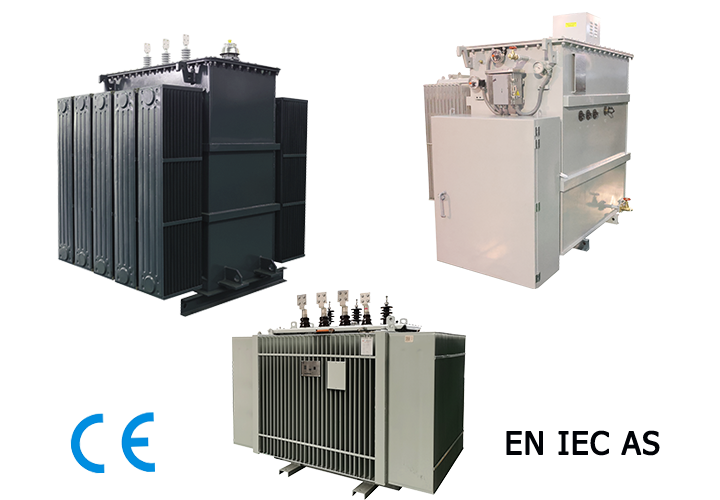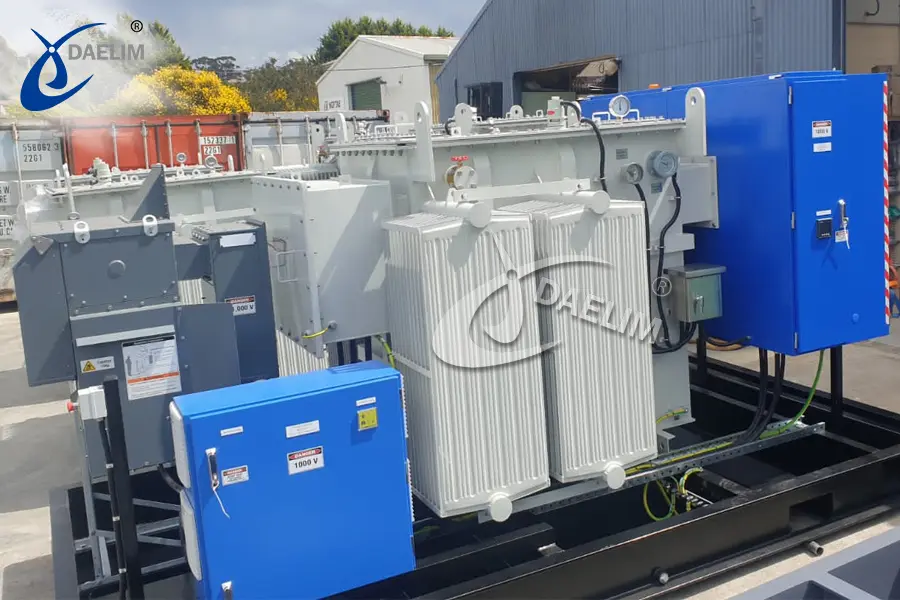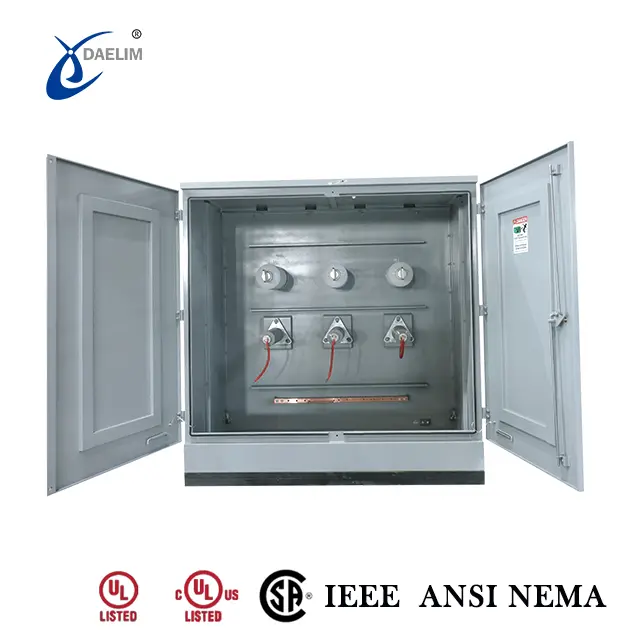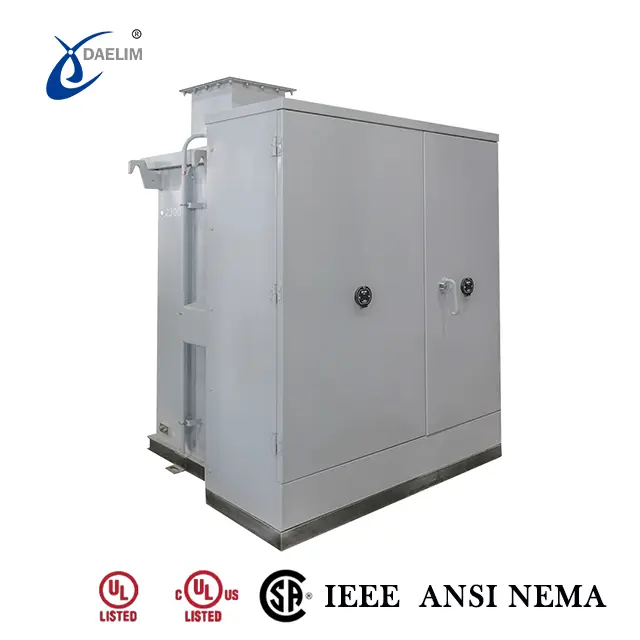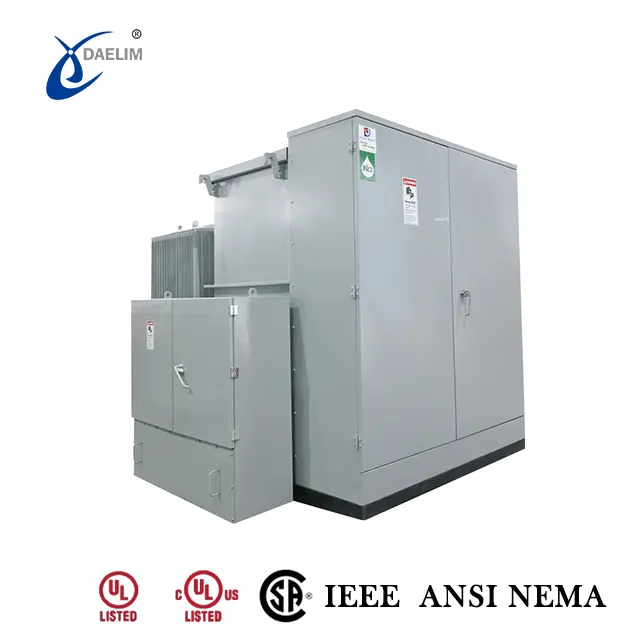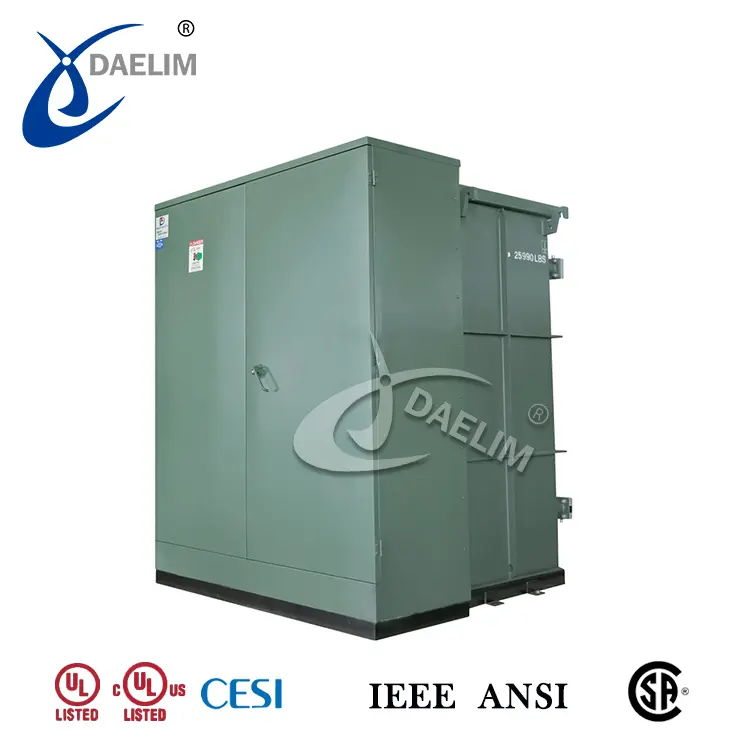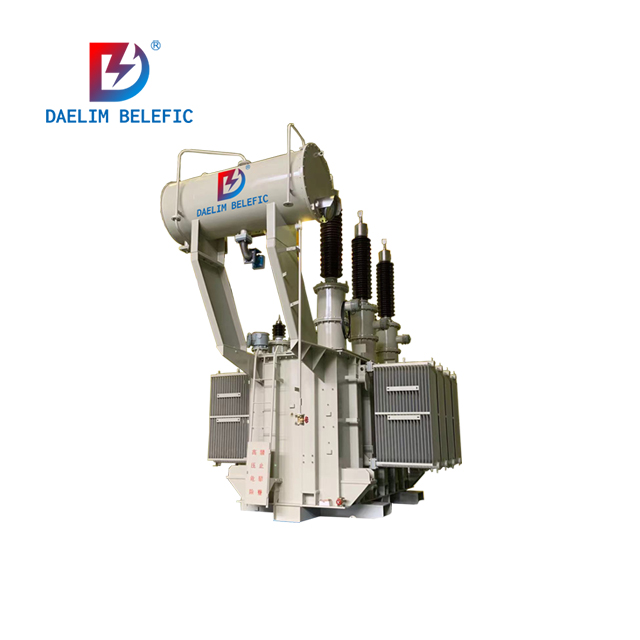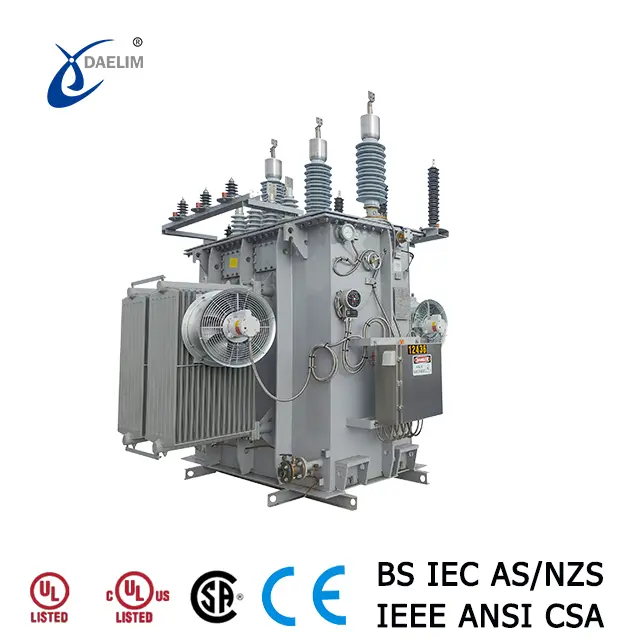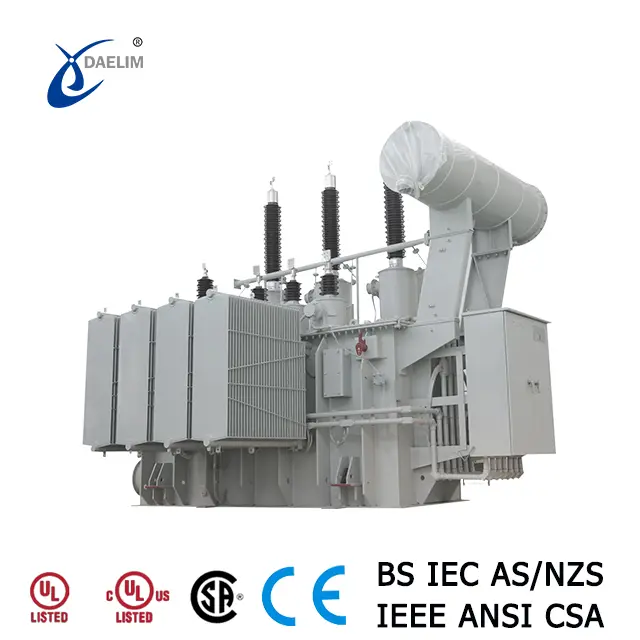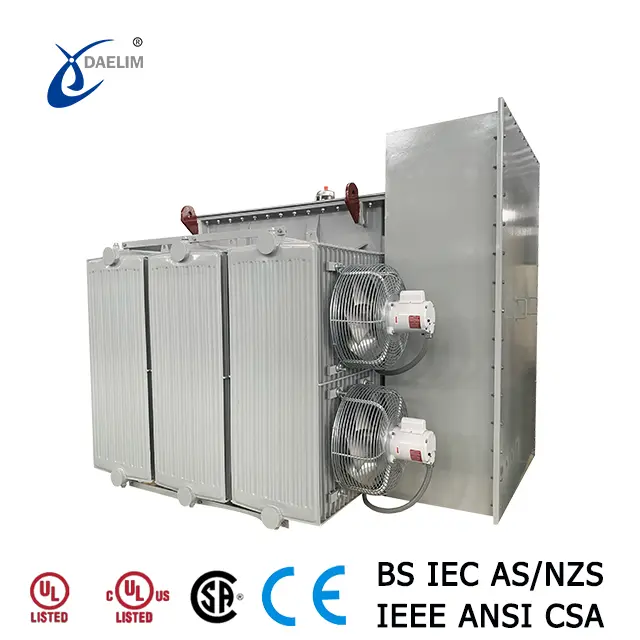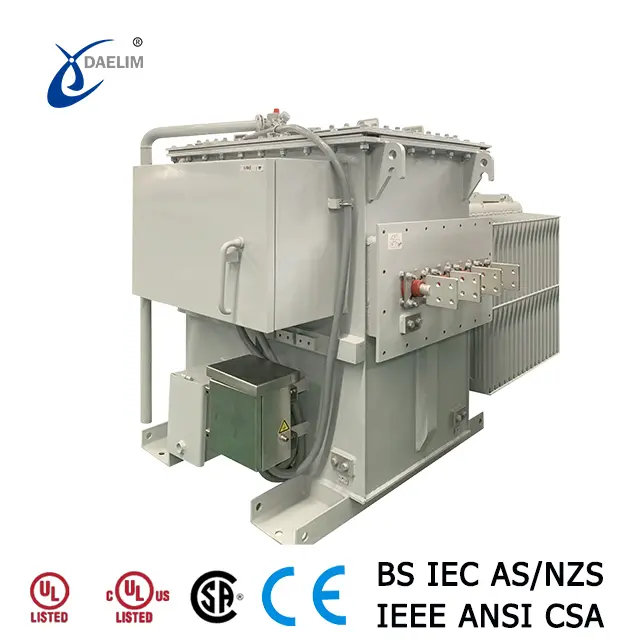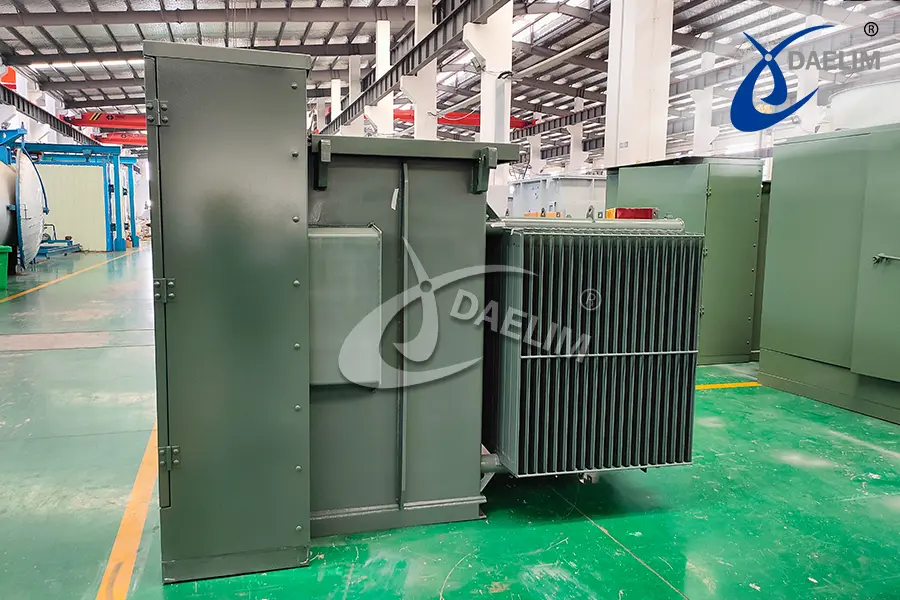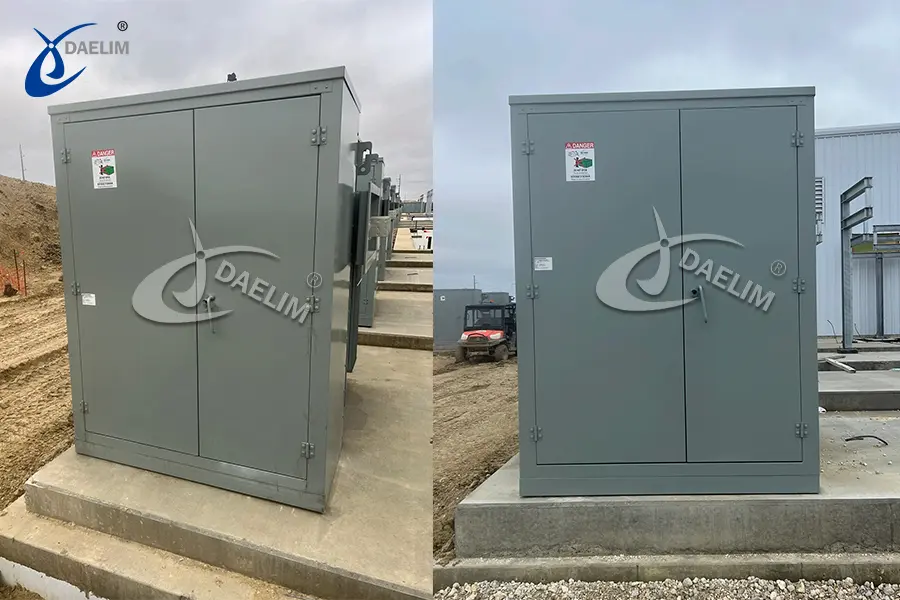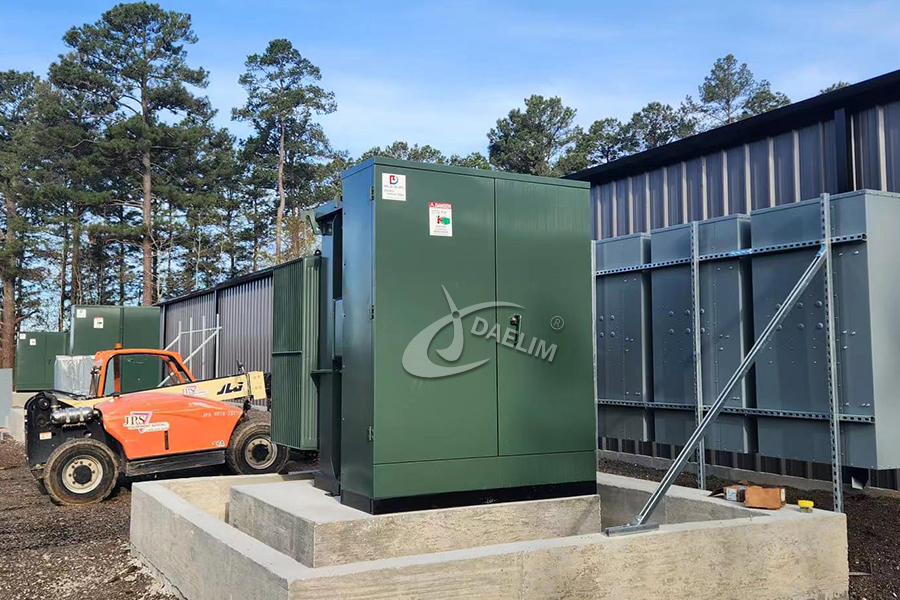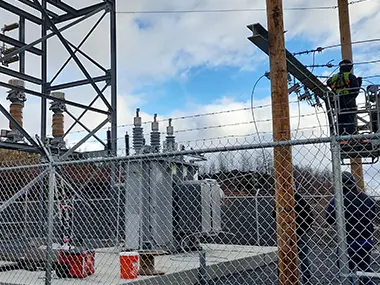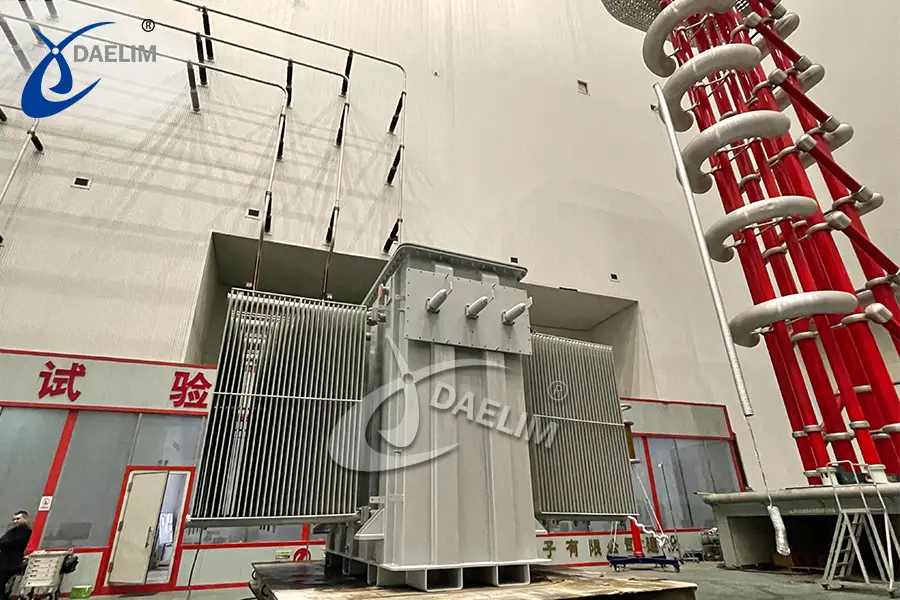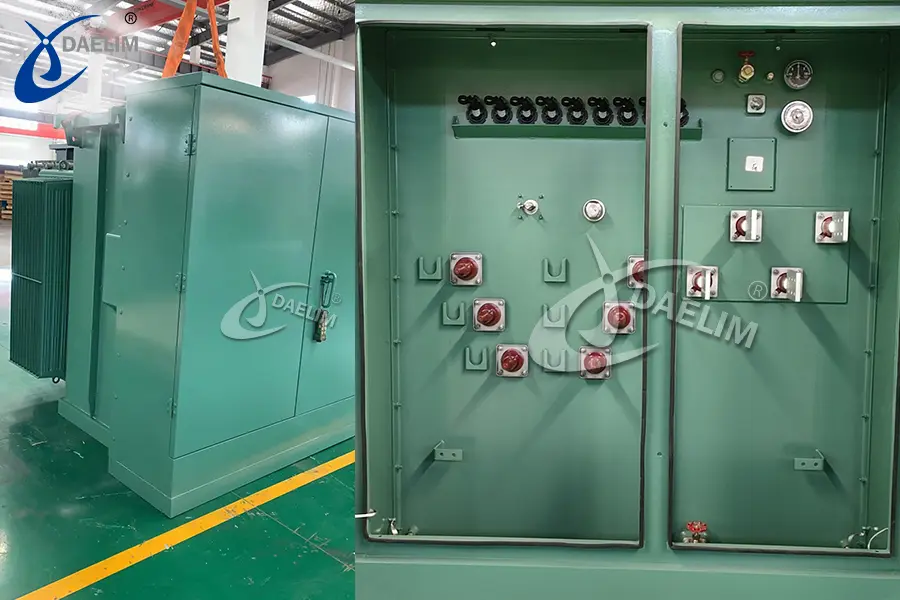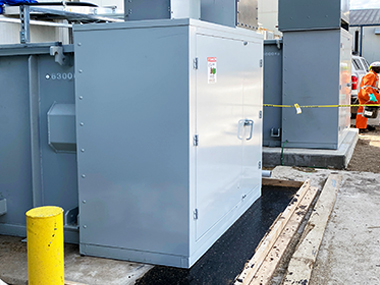The Ultimate Guide to Transformer Voltages
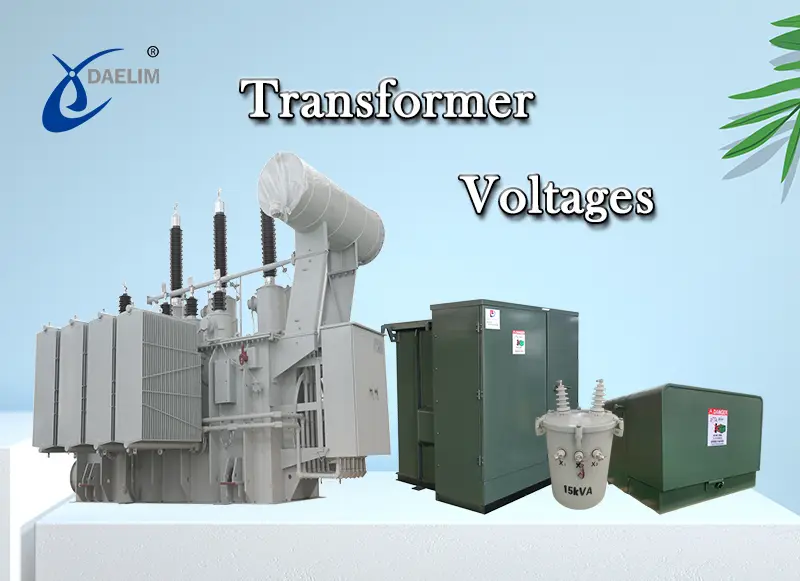
Transformers are vital for providing electricity to homes, industries, and businesses. The most vital factor in keeping a system stable and working properly is choosing the right voltage. The right voltage is needed for heavy machinery, industrial systems, and renewable energy systems.
Choosing the right voltage is crucial to ensure he single-phase transformer voltages, 3-phase transformer voltages, and Delta transformer voltages, what they are used for, and how they affect poweavy machines, industrial systems, and even renewable energy settings function correctly. Here's a look at different voltages includingr delivery.
Contact Daelim TransformerBasics of Transformer Voltages
Transformers are very important in the power supply system because they adjust the voltage levels of the power supply to ensure that the electricity is transmitted safely and efficiently. Low-voltage transformers, such as powering appliances and machinery, are used for residential, commercial, and light industrial purposes, including 220V and 480V. High-voltage transformers, for example, 69 kV and 230 kV, are required for long-distance electricity transmission and heavy industrial use, where step-up transformers increase the voltage for minimal loss, and step-down transformers reduce the voltage to safe levels for end users.
Power Grid Voltage
North America
For the North American region, the MV and HV grid is constructed such that two major levels of power transmit and distribute such that they have smooth transmission from source sites directly to end-users. The voltage classes include:
1. Medium Voltage (MV) Grid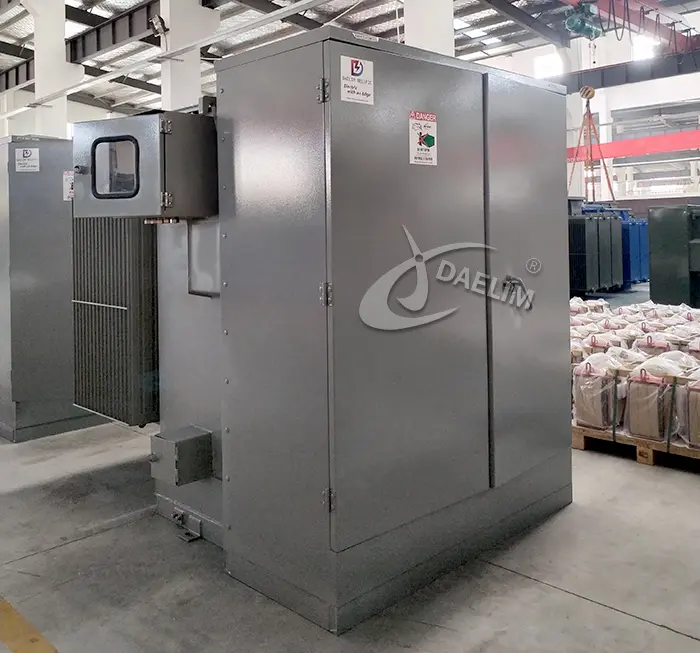
Voltage Range: 1 kV to 69 kV
This is the most elementary system for local networks concerning transmission and regional power supplying. In this system, higher transmitting lines are connected to substations where power is reduced for use in homes, industries, and businesses.
Key Functions
- Local Power Distribution: It is distributed through MV networks to supply power to towns and villages.
- Voltage Transformation: This explains how the high transmission voltages, which flow into the substations, are reduced to appropriate levels for use by the customers.
- Support for Regional Networks: The power between the transmission systems and circuits stabilizes and distributes in a considerable and effective manner.
More resource: High Voltage vs Medium Voltage Transformer
Common Applications
- 1 kV-33 kV: For feeding these smaller local distribution systems and other even more modestly-sized industrial sites.
- 34.5 kV to 69 kV: Regional distribution, usually delivered to cities/towns or small towns and industrial parks.
This provides an efficient and reliable source of flow of energy for the mixing of local and regional requirements with a continued supply for residential, commercial, or industrial use.
2. High Voltage (HV) Grid
Voltage Range: 115 kV to 230 kV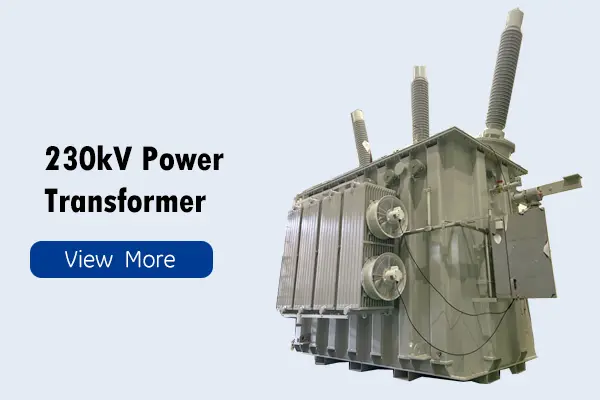
The HV grid is the segment of the power transmission system that transmits electricity over medium to long distances. It is a link between generation plants and regional substations to deliver power efficiently.
Key Functions
- Long-distance transmission: HV grids can transmit electricity from the power plants to regional substations with minimal loss in energy.
- Bulk Power Handling: Because of the higher voltage, this system could handle big blocks of electricity, a big chunk of which was necessary for cities and heavy industry.
- Interconnection: HV grids connect a number of regions, hence providing a stable and reliable network that can share resources during peak demands or outages.
Common Applications
- 115 kV: It is mainly used for medium distance high power transmission in districts feeding the urban centers as well as industrial power drainers.
- 138 kV: For connection with neighboring cities and large zones of industrial activities.
- 230 kV: This supports long-distance, regional power transmission to link generation sites to key hubs in the distribution system.
Reading more: Different Transformer Types and Their Applications
This grid is one of the strong infrastructures of the modern system that balances efficiency and reliability with large scales of energy demand.
3. Extra High Voltage (EHV) Grid
Voltage Range: 345 kV to 765 kV
The foundation of the electrical transmission system in North America is Extra High Voltage networks that permit electricity to be transferred over several states and regions. They make distances traveled by power long, without significant energy losses.
You may enjoy: Ecodesign Transformers
Key Functions
- Long-Distance Power Transmission: EHV systems are used to carry electricity from massive generation stations up to large-load centers sometimes over hundreds of miles.
- Grid Interconnection: They interconnect various regional grids with an objective of reliability and stability of the grid.
- Minimizing Energy Loss: EHV network high voltages save loss and effectively supply power over long distances.
Common Applications
- 345 kV: Interstate and Intra-regional transmission, Plant with primary distribution nodes.
- 500 kV: Used for large inter-regional energy transmission purposes. It satisfies the stringent power requirements in highly populated districts.
- 765 kV: This is the highest North American power transmission voltage. It deliver electricity over ultra-long distances and large-scale energy projects.
Thus, the grid is somewhat meaningful for North America as it would serve the need for energy in cities and industrial belts in maintaining stability and resilience in the integrated power network.
Europe
The role of the European MV grid is generally regional supply for electricity. It is a middle level in systems which connect high-voltage transmission grids with more local low voltage network distributions.
This allows power to be transmitted at efficient step-down voltages to urban, suburban and industrial locations from HV levels toward residential, commercial or smaller industrial consumptions.
The many levels of voltage include:
1. Medium Voltage Grid
The medium voltage is basically used for regional distribution in Europe. It is an interlinking point between the system with high transmission and local distribution networks.
Key Functions:
- Local Distribution: Supplies products from the substations to homes, businesses, and light industries.
- Decentralized Energy Integration: It supports renewable energy sources like solar panels and small-scale wind farms because they are connected to the grid.
Common Applications
- 10 to 20 kV: Extensively used in cities and suburbian networks for the commercial and residential utilities distribution.
- 30 kV to 45 kV: These have to be used when the equipment and machine capacity is very large.
2. High Voltage Grid
Voltage Range: 45 kV to 230 kV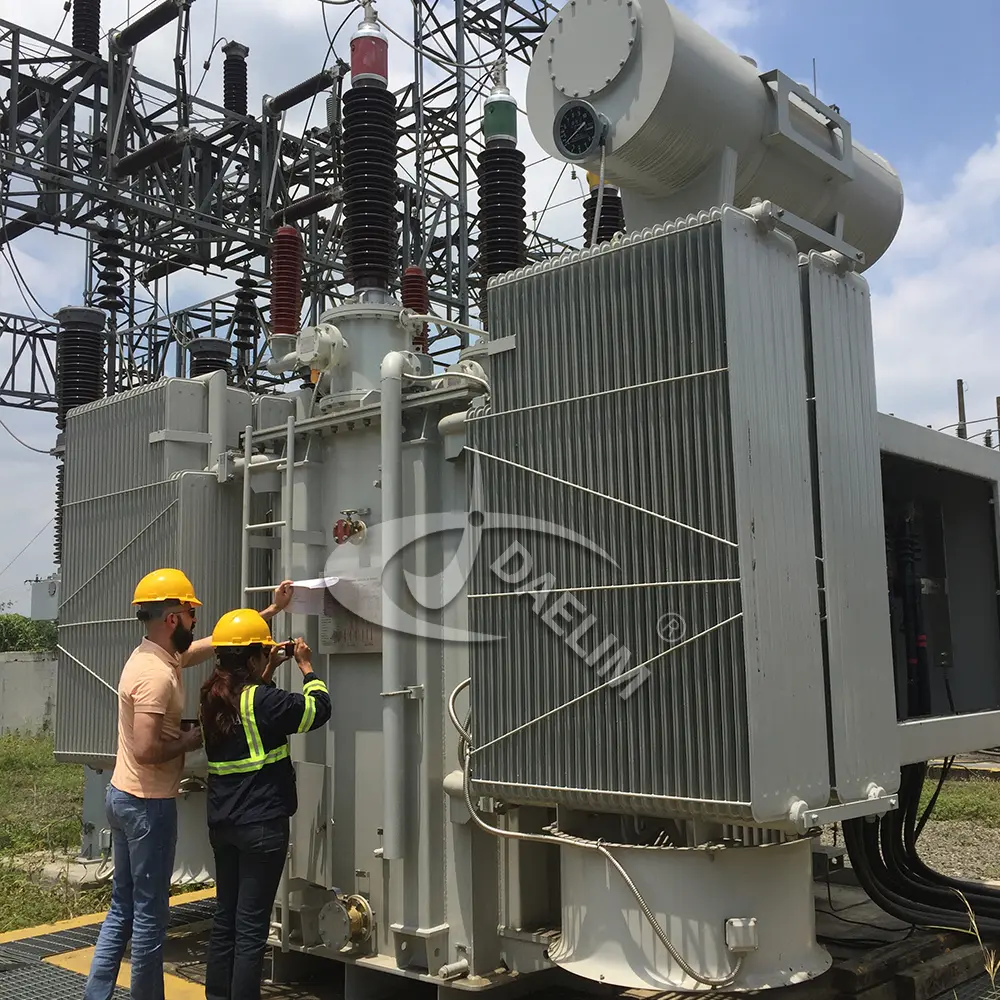
High-voltage grids connect cities and regions in European countries mainly to facilitate efficient transmission of electricity over intermediate distances.
Key Functions
- Regional Interconnection: Connects regional sub-stations to big industrial centers and municipal centers.
- Grid Resilience: It offers the system reliability by interconnecting different parts of the network.
Common Applications
- 110 kV: Most of the European countries use them to establish the national grid.
- 150 kV to 220 kV: These are mainly used for cross border energy sharing in the European grid system.
More resource: Basic Guide To High Voltage Power Transformers
3. Extra High Voltage Grid
Voltage Range: 235 kV to 765 kV
This extra high-voltage grid is the backbone of the energy transmission on the continent. Due to its massive transfer capability across country and regional borders, it loses a minimal amount of electricity during the transfer.
Key Functions
- Pan-European Connectivity: It fosters the cross-border exchange of energy through the European interconnected grid system.
- Integration of Renewables: Transmission of electricity from offshore wind farms and large hydropower plants into the mainland grids.
Common Applications
- 380 kV: All main lines across the entire vast region of Europe used for inter-regional and international power flows.
- 500 kV to 765 kV: More and more lines are being built for ultra-long-distance transmission and big integration of renewable energy sources, including the North Sea offshore wind farms.
Oceania
Oceania has divided its network into different levels of voltages to achieve efficient transfer and distribution of electricity over its geographically diverse areas. Its system is tailored to the requirements of energy by urban centers, rural centers, and industries and complements renewable sources of energy.
1. Medium Voltage Grid
Medium Voltage in Oceania is very important to the regional and local electricity supply. It acts as an intermediate connection between high voltage transmission systems and distribution networks that provide power supplies to end-users.
Key Functions
- Local Energy Distribution: Power supply to buildings, homes, and small industries through local substations.
- Renewable Energy Integration: Support small-scale solar farms and wind turbines by integrating them into the main grid.
Common Applications
- 11 kV: Primarily used in suburban and rural regions for residential and commercial power distribution.
- 22 kV: In regional network and industrial areas, higher capacity demand.
2. High Voltage Grid
Voltage Range: 33 kV to 220 kV
High voltage is the most efficient method of distribution over relatively short distances around counties while interlinking regional grids in Oceania
Key Functions
- Regional Interconnection: The power plants, regional substations, and industrial centers are interconnected.
- Stability and Reliability: Deliver highly reliable grids for a stable power supply over large regional areas.
3. Extra High Voltage Grid
Voltage Range: 220 kV to 500 kV
The extra-high-voltage grid is the principal backbone for power transmission in Oceania. It mainly provides an efficient method of movement for a high volume of electricity over large distances. The network is well-suited for supporting energy-intensive industries and enabling the integration of renewable energy sources.
Key Functions
- Long-distance transmission: Transfers power from generation stations located in remote areas to the urban areas and industrial areas.
- Inter-island: These also comprise inter-country connections and inter-island to provide shared energy resources.
Common Applications
- 275 kV: It is primarily used in many high-voltage grids. In Australia, it is mainly applied to inter-regional transmission.
- 330 kV: The voltage is used primarily for high-power, long-distance transmission of electrical power from large renewable energy installations into the main grid.
- 500 kV: Used mainly for ultra-high-capacity transmission in large power systems and also with an aim to reduce energy losses.
Asia
Asia's electrical infrastructure caters to the diversified needs of its fast-growing economies. It makes sure that energy can be transmitted and distributed with the highest reliability across urban centers, industrial zones, and rural areas. The power grid has several voltage levels for efficiency and minimum energy loss.
1. Medium Voltage Grid
Voltage Range: 1 kV and 33 kV
The Asian Medium Voltage grid is the central structural unit for local distribution of energy between high voltage systems of transmission and low-voltage end-user networks.
Key Functions
- Local Distribution: Power supply to the home, business, and small industrial customers.
- Rural Electrification: It represents an important role in the extension of power access to remote and rural regions, which are very common in Asia.
- Renewable Energy Integration: It integrates small-scale solar and wind farms directly into the grid.
Common Applications
- 11 kV: Used mainly in towns and cities for residential office use and light industries.
- 22 kV: Most commonly used in the rural electrification programs and intra-regional networks in developing countries such as India, China, and Southeast Asia.
- 33 kV: Industrial park and medium-sized Renewables System in South East Asia and South Asia.
2. High Voltage Grid
Voltage Range: 33 kV to 220 kV
The High Voltage grid provides the base intercity and interregional transmission network supporting Asia's rapid urbanization and industrial growth.
Key Functions
- Interregional Connectivity: It interconnects power plants, regional substations, and large industrial sites to ensure continuous electricity supply.
- Industrial Power Distribution: Supplies power for large industrial applications with high reliability.
- Renewable Energy Transmission: This allows for the connection of large wind or solar farms to the power supply system.
Common Applications
- 400 kV: Very common applications in India and China in interconnection of regional and national grids.
- 500 kV: It exists in ultra-high-capacity power systems which support industrial growth in the countries of Japan and South Korea.
- 765 kV: Primarily used for large power grids, especially in countries like India and China, where supply reliability is possible by ensuring efficient distribution.
3. Extra High Voltage Grid
Voltage Range: over 220, 400 kV, 500 kV, and 765 kV
The extra-high-voltage grid bridges the gigantic energy needs of Asian countries, particularly those that comprise huge geographies and have mostly industrialized economies.
Key Functions
- Long-Distance Transmission: Highly makes energy transfer over long distances less prone to power loss.
- Cross-Border Power Exchange: It sustains transboundary energy trade and connectivity, mainly in the Southeast Asian region.
- Large-Scale Renewable Integration: Facilitates large renewable-related projects like big wind farms.
Common Applications
- 400 kV: A component of the energy infrastructure in India, China, and other large economies, interfacing at and/or supporting national grid operations.
- 500 kV: South Korea utilizes 500 kV HVDC systems for stable power supply to urban cities such as Seoul for effective demand supply there. Similarly, Japan also uses 500 kV systems in its transmission network for reliable power delivery to densely populated and industrial areas.
- 765 kV: These are used in high power transmission systems, such as India's National Power Grid for stabilizing and efficient supply to high-demand regions.
Common Industrial Transformer Voltages
 Industrial transformers are designed to support operations in diverse levels of voltage according to a certain application or requirement. The commonly used voltage levels for industrial transformers are presented below:
Industrial transformers are designed to support operations in diverse levels of voltage according to a certain application or requirement. The commonly used voltage levels for industrial transformers are presented below:
Standard Volts
- United States - 480V
- United States - 240V
- United States - 208V
- Canada - 600V
- China - 380 Volts
- Crypto Mining - 415V/480V
- European - 400V
More resource: The Top 10 Best Industrial Transformer Manufacturers in The Word
Renewable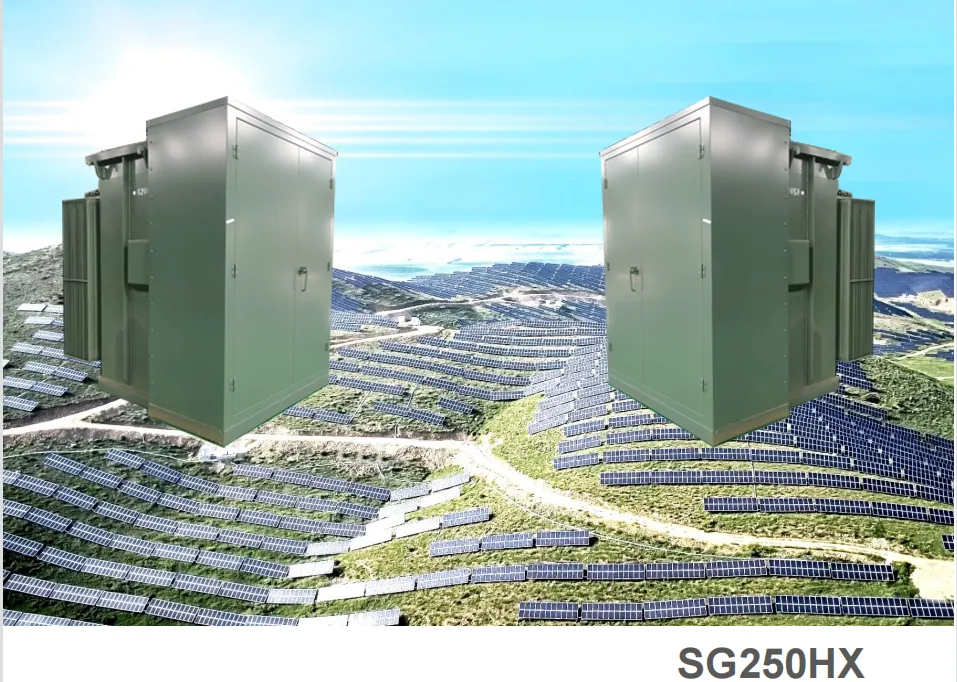
- Solar - 600V
- Solar - 630V
- Solar - 800V
- Wind - 690V
More resources:
Standard Transformer Voltages (United States)
The American electrical system heavily relies on three main transformer voltages, which are 480V, 240V and 208V. A high percentage of industrial and commercial buildings use the configuration at 480V three-phase. In step-down transformers, the settings meet the low voltage to levels 240V, 208V, or 120V to serve the smaller appliances and equipment.
Daelim is the one you can turn to during the time when you need to get a transformer. We provide transformers like 3-phase pad-mounted models at 34.5kV and 24,940 DELTA and single-phase options as needed. All you have to do is contact us today to start the process.
Imported Transformer Voltages
Some of the voltages applied in other countries are neither a standard level nor required, normally by equipment, in the United States. If that is the case, a transformer is necessary to do the conversion.
The Canadian Standard Voltage
The standard industrial supply voltage in Canada is 600 VAC, which is equivalent to 480 VAC in the United States. Machinery designed to operate in Canada will therefore often be built for 600 volts. To operate this equipment in the U.S., a transformer must be supplied to step the voltage up to 600 volts.
More resources:
Pad Mounted Transformer CSA C227.4 National Standard of Canada
CSA C88 Standard For Power Transformers
CSA C802 For Minimum Efficiency Values For Power Transformers
CSA C227.3 For Single Phase Pad Mounted Distribution Transformer
Three Phase Live Front Pad Mounted Transformers Under CSA C227.5
Crypto Mining Voltage

Crypto miners talk about “import” voltage, meaning things do not generally need to be plugged into the wall to be connected to the facility controls. Mining rigs are typically custom-built to run off 240V single-phase electric power. The best way to do so is to use a 3 phase wye transformer rated at 416 volts or the 3 phase transformers with primary voltages of 34.5-19.92/13.8-7.957/13.2-7.62/12.47-7.2,44 kV and secondary of 240/480/480Y-277/600Y-347.
The European Standard Voltage
Every equipment built for the European market works at 400 volts, while in America it always works on a lower voltage 200 volts. To reconcile these two requirements, various devices such as step-up or step-down transformer should always be used. American manufacturers can use German CNC machines that need 400V instead, but for those machines to work, the voltage needs to be adjusted upwards or downwards.
These devices can work well in a 440Y/230 delta configuration as well.
The Asian Standard Voltage
For the case of China and most of Asia, the first voltage which has been standardized is 380 volts three-phase distributed. Transformers are needed to alter the voltage coming from the Chinese manufactured machinery as they are one of the largest exporters of equipments to the U.S. These transformers are essential for running Asian-manufactured equipment in the U.S.
Renewable Transformer Voltages
Unlike conventional industries, wind farms and solar equipment create electricity of unreliable voltage. Using renewable energies to power up a grid or equipment requires slightly different voltages, including 600V, 630V, 690V and 800V. This in itself demands a whole new set of transformers to allow smooth electricity transition from equipment to the grid.
Types of Transformers by Voltage
Low Voltage Transformers
Transformers that operate on low voltage are very important in a wide range of industries such as commercial and technological. The operating range of such transformers is between 240V and 690V and they serve a variety of industries and specialized devices.
Transformers operating on low voltage are vital in a number of commercial, industrial and technological applications. They normally operate on voltages between 240V and 690V. This serves many sectors and specialized equipment.
Low Voltage Transformers Applications
Industrial Equipment
- CNC Machines: A category of machining devices that includes transformers ranging from 240V to 400V for accurate power control.
- Motor Control Systems: Assisting the efficient supply of electrical energy to industrial motors operating at 400 and 690 volts.
- Cryptocurrency Farms: Power transformers effectively designed to serve the high-density compute environment at 415V and 480V.
- Renewable Energy Systems
- Solar Array Conversion: 600V, 630v and 800 volts Solar PV System integrated Transformers for Solar Power Plants
- Power Conditioning: Inverters for solar and Photovoltaic systems with voltage control features.
- Grid Integration: Connecting renewable energy sources and electrical grids.
More resources:
How to chose Pad Mounted Transformer for Crypto Mining Projects
Transformers Solution For Data Center and Cryptocurrency Mining
Daelim Transformers Solution For Renewable Power Plant
Medium Voltage Transformers (1 kV - 33 kV)
Medium voltage transformers are devices that link the gap between low voltage systems and high-voltage power transmission networks. These types of transformers are crucial for:
- Industrial power distribution
- Electrical systems in commercial buildings
- Intermediate power transfer
- Substation apparatus
- Large-scale manufacturing facilities
High Voltage Applications
High-voltage transformers are built for extensive electrical power delivery and big energy ventures. They support major functionalities such as:
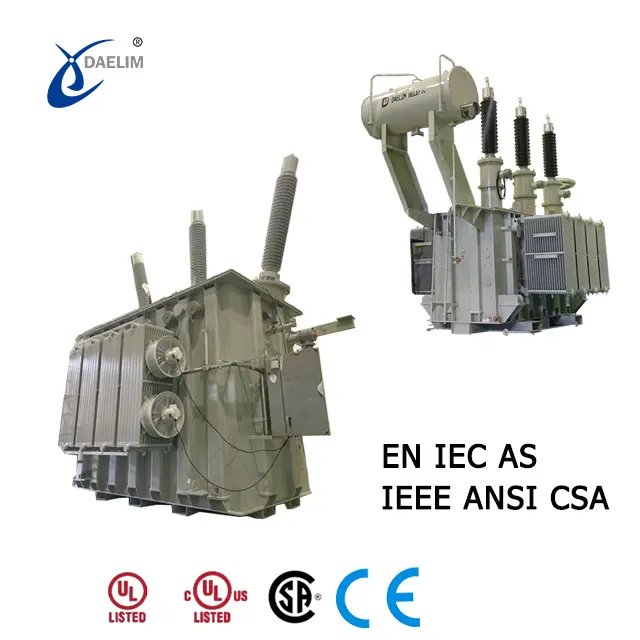 Powering Heavy Industrial Equipments: Transformers control and govern voltage ranges from 69 kV to 765 kV, providing safe and efficient power to heavy machinery and large motors in commercial and residential applications. Some specific range of voltage is used for connecting regional grids with the industrial plants, for example, 34.5 kV to 138 kV.
Powering Heavy Industrial Equipments: Transformers control and govern voltage ranges from 69 kV to 765 kV, providing safe and efficient power to heavy machinery and large motors in commercial and residential applications. Some specific range of voltage is used for connecting regional grids with the industrial plants, for example, 34.5 kV to 138 kV.- Industrial Motor and Machinery Operations: Applications dealing with CNC machines, industrial motors, and mining equipment entail high voltage. Industrial motors and mines use heavy machinery at 69 kV to 230 kV.
- Grid Connection: High voltage systems have grid integration and stability because regional power grids are linked together. Transformers ranging from 138 kV to 345 kV help transmit large amounts of electricity over long distances with low losses to ensure a stable supply of power across regions.
Conclusion
Selecting an appropriate transformer is crucial for optimizing the performance within industrial, commercial, and renewable sectors. Knowing voltage specifications assists in preventing any damage to the equipment.
For more than 20 years, Daelim Transformer has been in the market specializing in transformers with an output tailored to a specified voltage, taking into consideration reliability and quality. Check our customized transformer solutions specifically developed for your success. Contact us to get started!
Related Products
Related Article
13.8 kV 10.5 MVA Substation Transformer for Ecuador
A customer from Ecuador contacted Daelim Transformer for a 10.5MVA substation transformer (13.8kV high voltage, 2.4kV low voltage). Daelim Transformer provided a customized solution, conducted virtual factory tours, ensured rigorous quality control via video inspections, and offered post-delivery online training and ongoing support, fostering a successful partnership.
1750 kVA Pad Mounted Transformer for the Dominica Market
Today, we're excited to present a transformer project tailored for the Dominican market. Our 1750 kVA pad mounted transformer is designed to meet the specific requirements of our clients in Dominica. This step-down transformer boasts a primary voltage of 13.8 kV and a secondary voltage of 480Grdy/277V, adhering to the IEEE C57.12.34 standard. With its robust features and reliable performance, this transformer is set to enhance the power distribution infrastructure in Dominica.
2600 kVA Pad Mounted Transformer for Cryptocurrency Mining
Daelim Transformer successfully provided three customized 2600 kVA pad mounted transformers to power a state-of-the-art cryptocurrency mining facility in Texas, USA. Our transformers were meticulously designed to meet the unique demands of the mining operation, ensuring seamless power distribution with unwavering reliability and efficiency.
1500 kVA Transformer for Australian Mining Project
Introduce the 1500 kVA transformer tailored for Australian mining projects. The transformer operates in a three-phase configuration, with a total of four units deployed. Notably, its primary voltage stands at 11kV, while the secondary voltage is 1kV. Characterized by its compact size, emphasis on safety, and unwavering reliability, this transformer is meticulously designed and manufactured to meet the stringent requirements outlined in AS 60076 and AS efficiency value standards.Let's delve into the key features and specifications of this essential solution.
2600 kVA Pad Mounted Transformer For Crypto Mine In Kansas
This morning, I received the on-site photos of the pad-mounted transformers from the customer, and I was overwhelmed with excitement and joy. These pad-mounted transformers are installed at a 20MW crypto mining site in Kansas, USA. A total of 5 sets of 2600 kVA pad-mounted transformers, all UL-listed, are being deployed at this site. Currently, 3 sets have already been installed onsite and are scheduled to be powered on imminently.
69 kV Power Transformer for Substation in Pennsylvania
Daelim recently completed the design, supply, and installation of a custom 69 kV transformer for a substation in Pennsylvania. This high-efficiency, three-phase transformer is engineered for reliability, scalability, and long-term performance, ensuring a stable power supply to the substation. Key features include low load losses, minimal maintenance, high insulation levels, and flexible cooling options. The solution enhances grid stability, supports future expansion, and minimizes energy consumption, reinforcing Daelim’s commitment to quality and innovation in power systems.
20MVA Power Transformer for the United States
This project involves the development of a 20 MVA three-phase power transformer tailored for the United States market. The primary voltage is 24.94kV, and the secondary voltage is 4.16kV, indicating it functions as a step-down transformer. The design and production fully comply with IEEE C57.12.00 standards and have passed third-party UL team testing. All accessories also adhere to IEEE standards. FR3 vegetable oil serves as the insulating liquid for the transformers.
2 MVA Pad Mounted Transformer for Utility
Behold the backbone of Canada's utility infrastructure—the 2MVA pad mounted transformer. With a primary voltage of 4160Grdy/2400V and a secondary voltage of 800GrdY/461V, this transformer stands as a testament to efficiency and reliability in power distribution. Crafted in strict accordance with CSA standards and CAN/CSA802.1 energy efficiency guidelines, it embodies the pinnacle of engineering excellence.
Pad Mounted Transformer For High Voltage Substation
FWS commissioned Daelim Transformer to design and manufacture a new high voltage substation for the Richardson International Canola Crush facility expansion in Yorkton, SK. The project required two specially designed top-in pad-mounted transformers, one 2 MVA and one 5 MVA. Unable to meet the delivery deadline, local North American suppliers led FWS to choose Daelim Transformer for their capacity and quality. The transformers were successfully produced and delivered within 16 weeks and are now operating safely.

